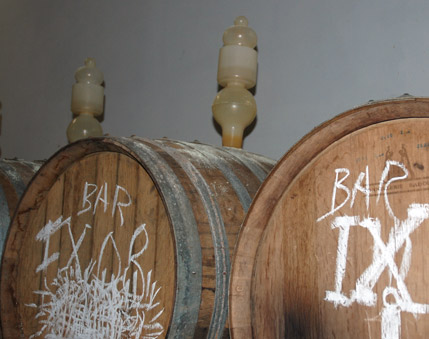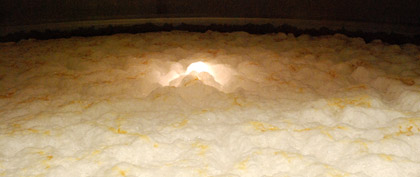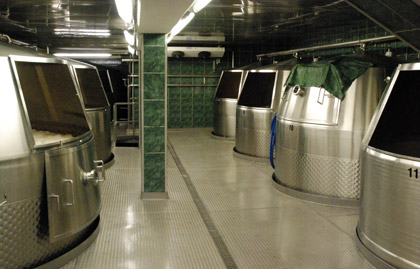Last night we ate in a restaurant in Florence that, like plenty others in Italy, boasts it serves “products of the region.”
More than half the customers were American tourists — it’s Florence — but if you didn’t listen too carefully the place didn’t feel touristy. There were local meat dishes to choose from as well as pizza (Daria declared her’s the best she’s had on our trip), calzones, all that you would expect.
We drank Chianta. We’re in Tuscany, it was poured from a barrel and it cost €4.80 for a half liter.
But as I paid the bill at the bar I noticed a dang fine beer selection lined up above. Rochefort 8, Orval, Duvel, Achel, St. Bernardus Tripel among others. But no Italian craft beer.
I’ve heard more than one non-Italian brewer compare what’s going on with Italian beer to 20 years ago in the United States. Sometimes that’s not intended as a compliment, but as a reference to a technical brewing gap. Mostly it’s about the excitement generated by brewers and their fans.
It’s grown because Italians haven’t tried to recreate America circa 1988, when U.S. brewers were just beginning to explore basic styles. They are drawing from the world, adding flowers, using chestnuts, tossing in tobacco . . . basically being Italian. They are making some really interesting beers we all want to drink.
However they remain small and, like American craft breweries in 1988, not all that well known in their own country. This might surprise American drinkers, because new Italian beers seem to arrive daily. And their beer sells for more in Italy than, for the sake of comparison, Trappist beers do in Belgium (or Orval does in Italy, for that matter). Additionally, Italy began feeling the economic downturn before many other countries.
To cut to the quick, this is not as simple as “brew great beers and they will come.”
More thoughts on this in a week or so, including why this is important to pay attention to even if you don’t drink in Italy. In the interim, I’ll be in research mode.
– History according to Stella. Lager contains “only the four traditional ingredients of beer” — malt, water, hops and maize. Learning stuff like this is why Boak and Bailey’s Beer Blog is essential reading.
– Get well, Uncle Jack. Fortunately, Jack Curtin “only” lost an appendix, a lot of time to the hospital and some weight. Send him your best.
– Pissing in the steets. There are many good reasons to read Pete Brown’s blog. I recommend subscribing to his rss feed because he might go three weeks between posts. Always worth the wait. I had a damn hard time deciding what to quote from the most recent.
Hands up – every now and then, maybe once every couple of months, I take a leak in some dark street corner on the way home. I’m not proud of it. I’m faintly disgusted by it. But here’s the thing: the British Public Toilets Association (yes, there really is such a thing) reckons 45% of public conveniences have closed in the last couple of decades. They occupy prime real estate – one former public toilet was recently sold for £125,000 as a flat.
And be sure to read the comments.


